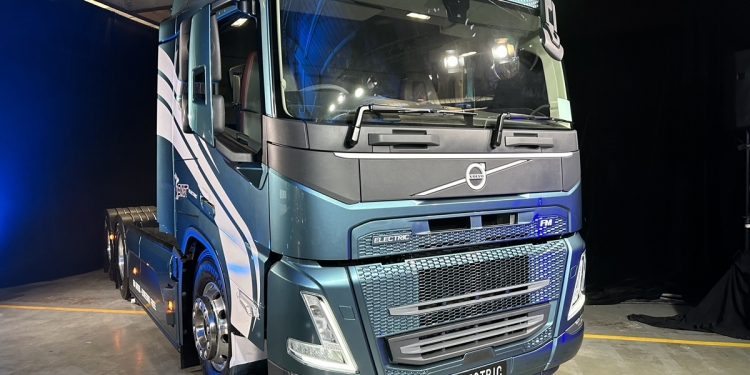Volvo Trucks has officially launched its fully-electric heavy duty prime movers in Malaysia. In fact, the launch in Malaysia also marked the debut of the Volvo electric trucks in Southeast Asia.
Even though only one variant was shown at the launch yesterday, Volvo Trucks Malaysia said that all three variants of its fully-electric prime movers can be obtained in our market. Also available in rigid form factor, the list includes FH Electric, FM Electric, and FMX Electric.
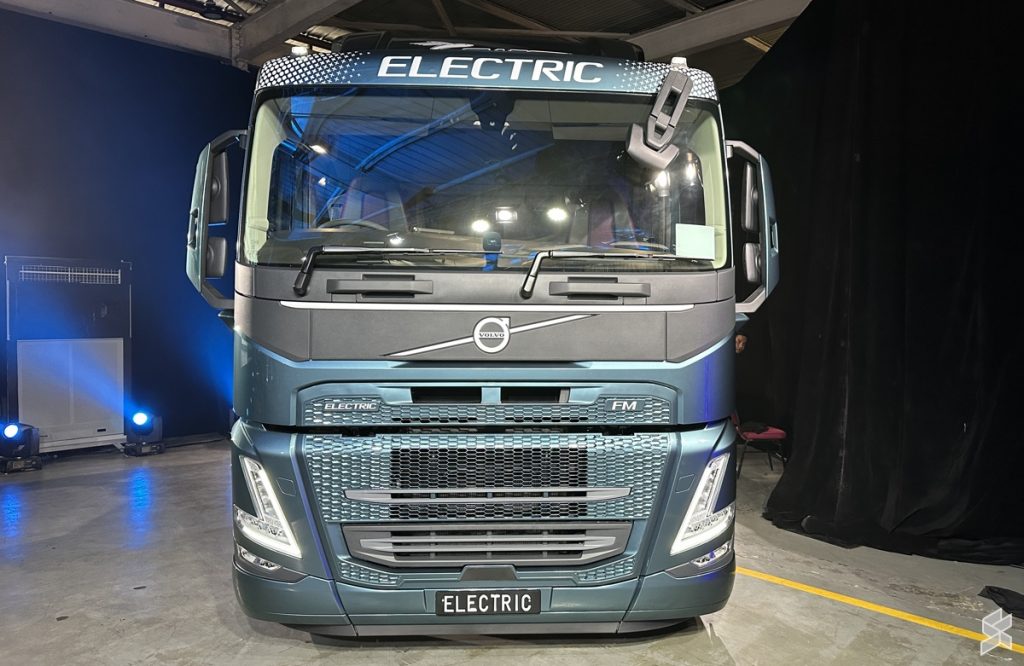
When we first discussed the imminent arrival of these massive electric trucks, several people on social media questioned about the 300km range which seemed rather short. Clearly, this was something that didn’t go unnoticed by Volvo Trucks Malaysia which took the opportunity to address the range issue as well as other burning questions that the public has when it comes to Volvo electric trucks.
Is 300km sufficient for the transportation industry?
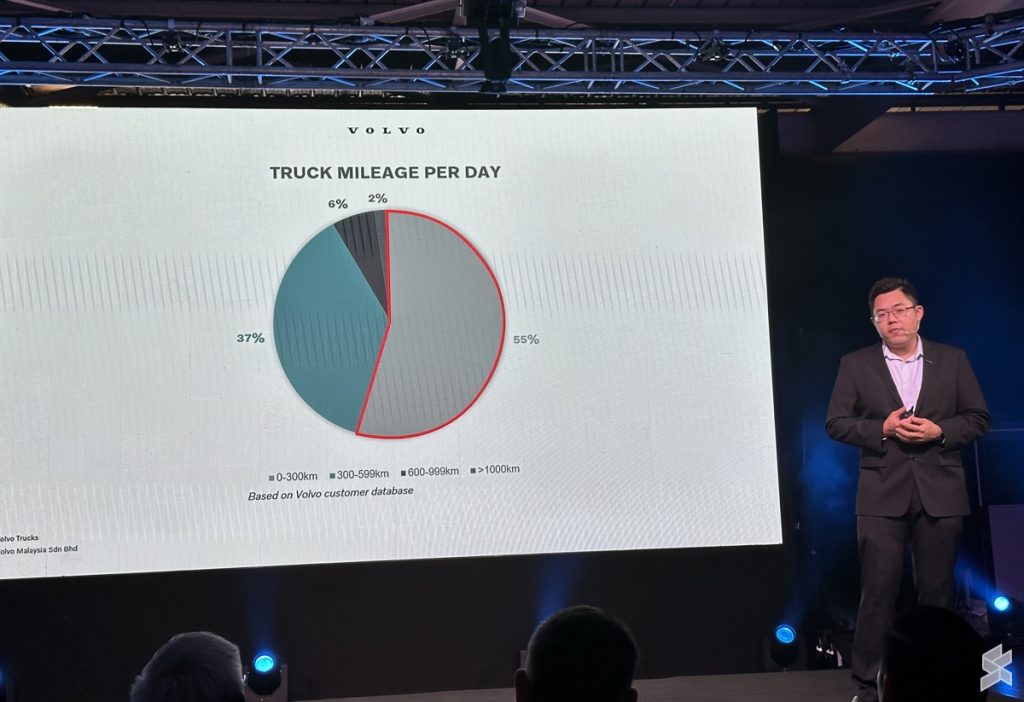
When we think of these huge heavy duty prime movers, we would imagine them doing long inter-state journeys. After all, we always see these trucks on the highways all the time.
As it turned out, the majority of them do not embark on long journeys. During the launch event, the Product & Price Manager of Volvo Trucks Malaysia, William Ee pointed out that 55% of Volvo customers have daily mileage of under 300km and this is exactly how Volvo EV trucks fit into the big picture.
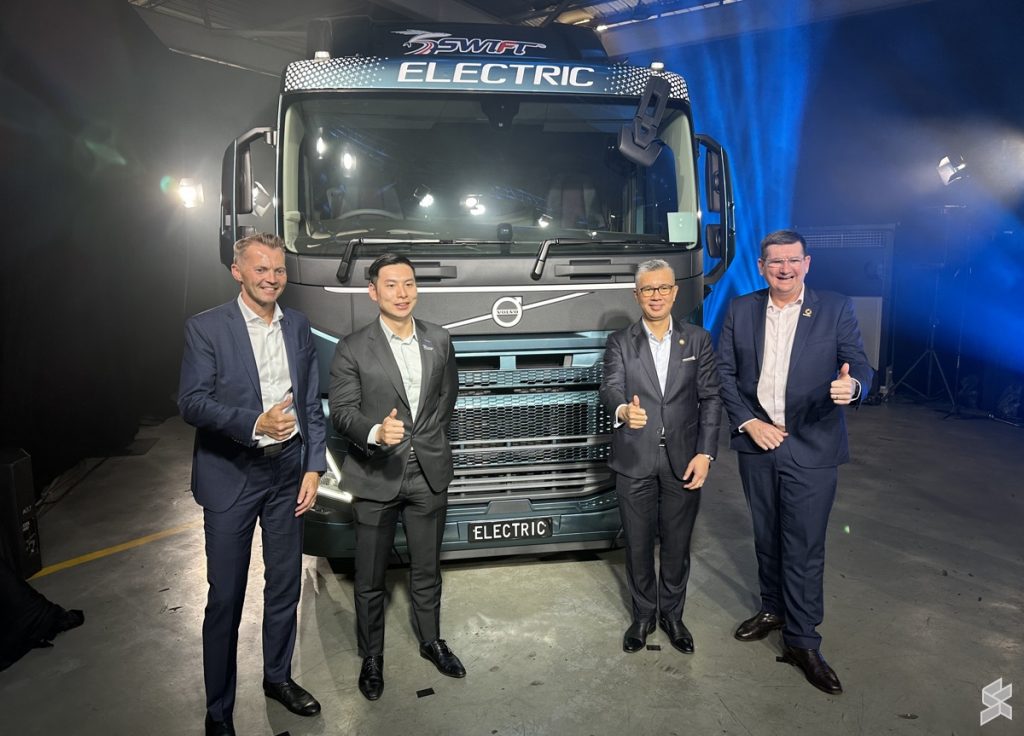
The first adopter of Volvo electric heady-duty prime movers in Malaysia is the Swift Haulage Berhad, following the MoU that it signed with Volvo last August. The two Volvo FM Electric that it has acquired is just the start of the company’s plan to convert the majority of its fleet to EVs by 2030.
Its Group CEO, Loo Yong Hui said Swift Haulage will be using these electric Volvo trucks within the Klang Valley. You can expect to see these trucks in action delivering containers from Port Klang to areas such as Klang and Shah Alam, which are well within its 300km range.
The charging time is quite long – do we even have chargers to support these massive EV trucks?
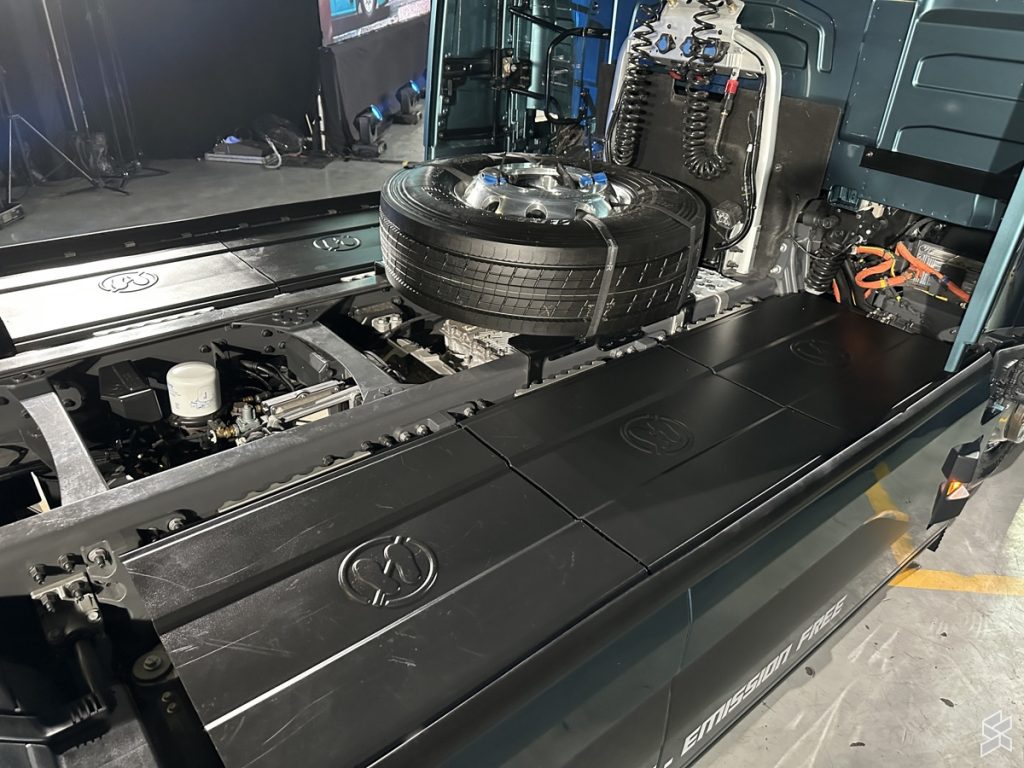
Regardless of whether FH Electric, FM Electric, or FMX Electric, they generally have the same electrical system. Customers can choose to fit these trucks with up to six battery packs that carry overall battery capacities of up to 540kWh.
It takes around 10 hours for these Volvo EV trucks to be fully charged via their onboard 43kW AC charger. With a 250kW DC fast charger, the charging time can be reduced to under two hours and all Volvo electric trucks for Malaysia come standard with a CCS2 charging port.
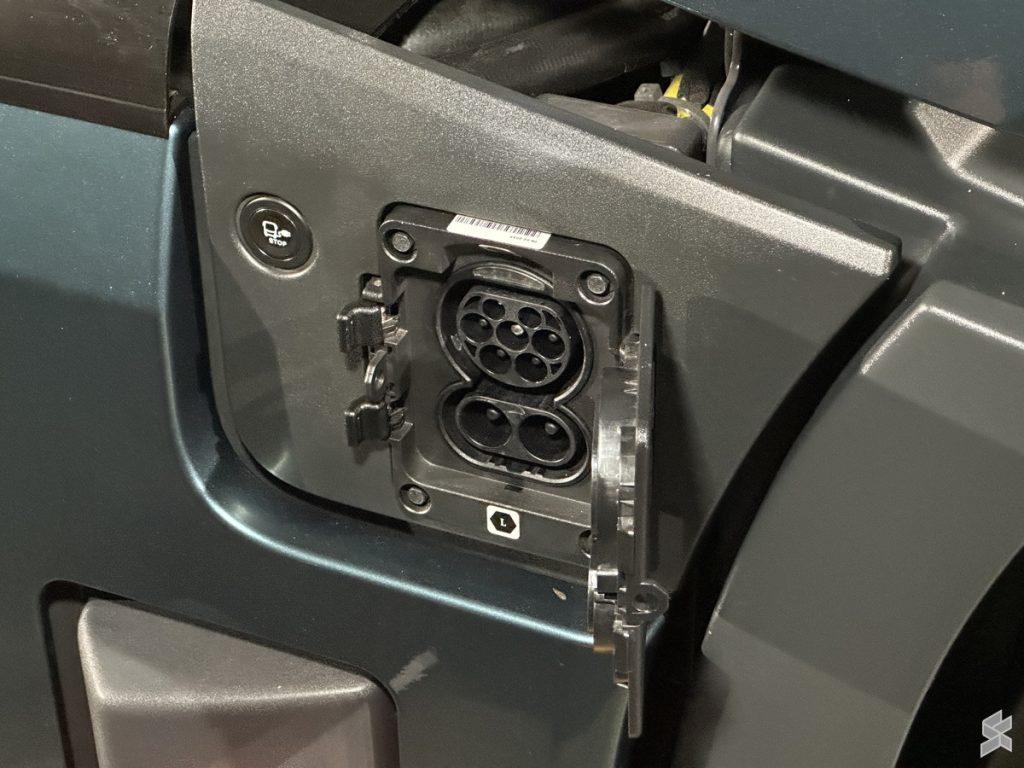
Given the relatively long charging time, it might seem like a challenge to utilise these EV trucks but Volvo seemed confident that this this can be addressed through proper scheduling. Using the industry’s common operational time of between 8 AM to 6 PM, William has presented a rather interesting proposition during the event.
Fleet operators would start the day with a fully-charged truck in the morning and then utilise it until the mid-day break. Assuming that the battery level is 45%, drivers can top up the battery for 30 to 60 minutes via DC fast charger during their break to increase the battery level to 75%.
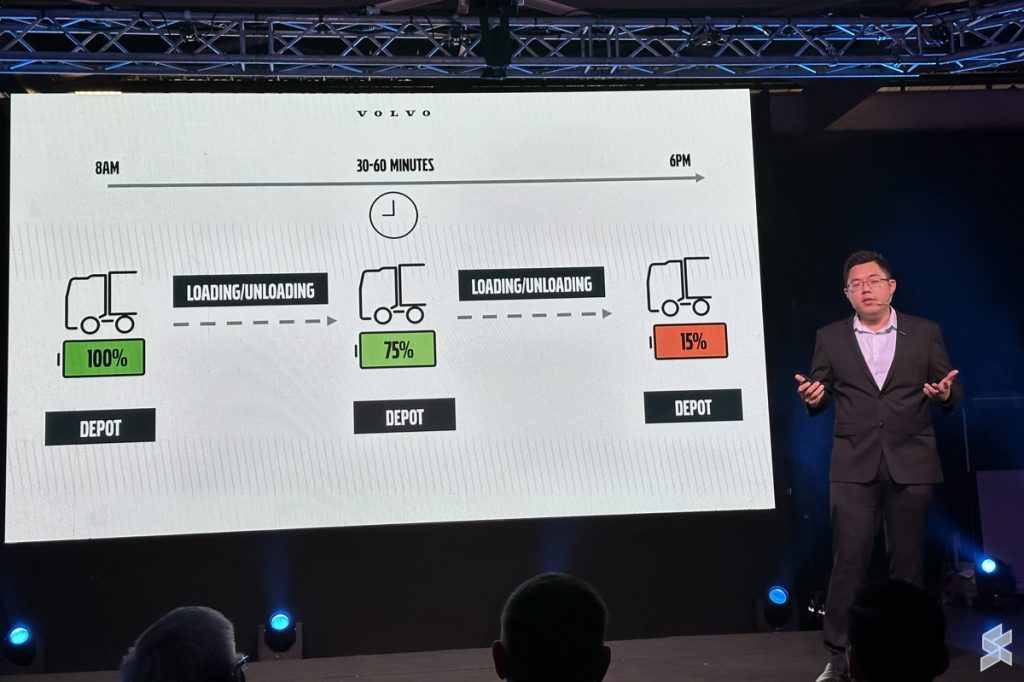
When the drivers are done with their day, they can then let their EV truck be charged overnight at the depot through the AC charger. Speaking about charging infrastructure, Volvo has already installed a 180kW DC charger at its facility in Shah Alam according to Amanda Ng, Vice President of Vehicle Sales, Logistics, and Marketing for Volvo Trucks Malaysia.
The company is also currently in the process of deploying another DC fast charger at its Port Klang dealership which is expected to go live by the year-end according to Amanda. Ultimately, other Volvo Trucks dealerships throughout Malaysia will have chargers as well.
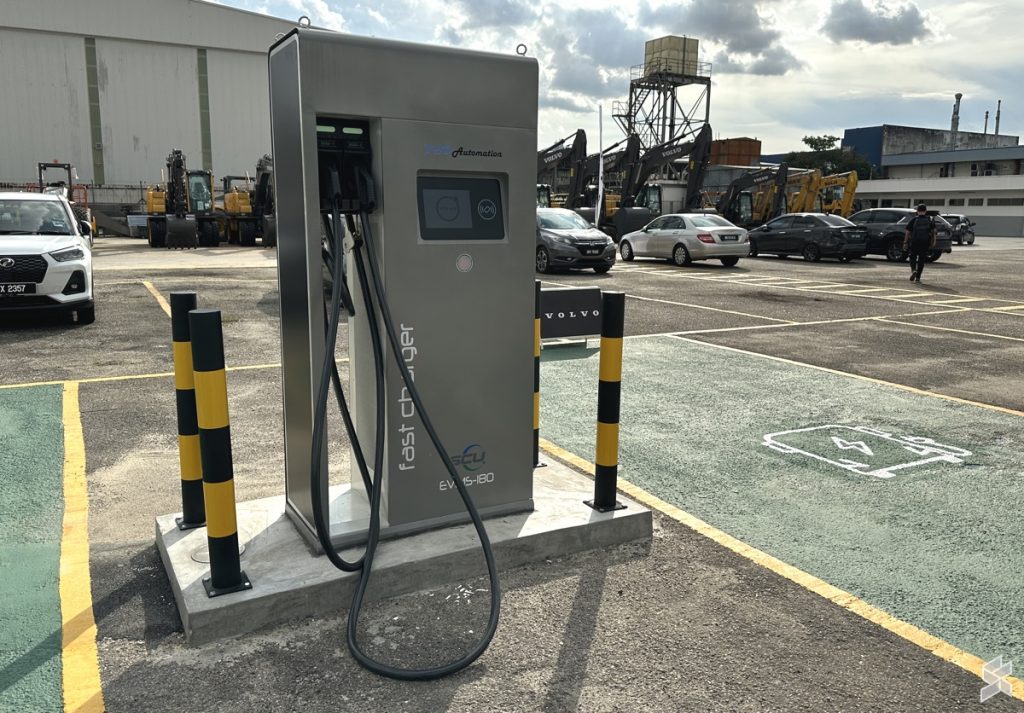
At the same time, the company already embarked on discussions with other parties such as PLUS Expressways Berhad and various Charge Point Operators (CPOs) to look into charging infrastructures, especially in strategic areas such as highways.
What’s the benefit of electric trucks vs existing ICE-based models?
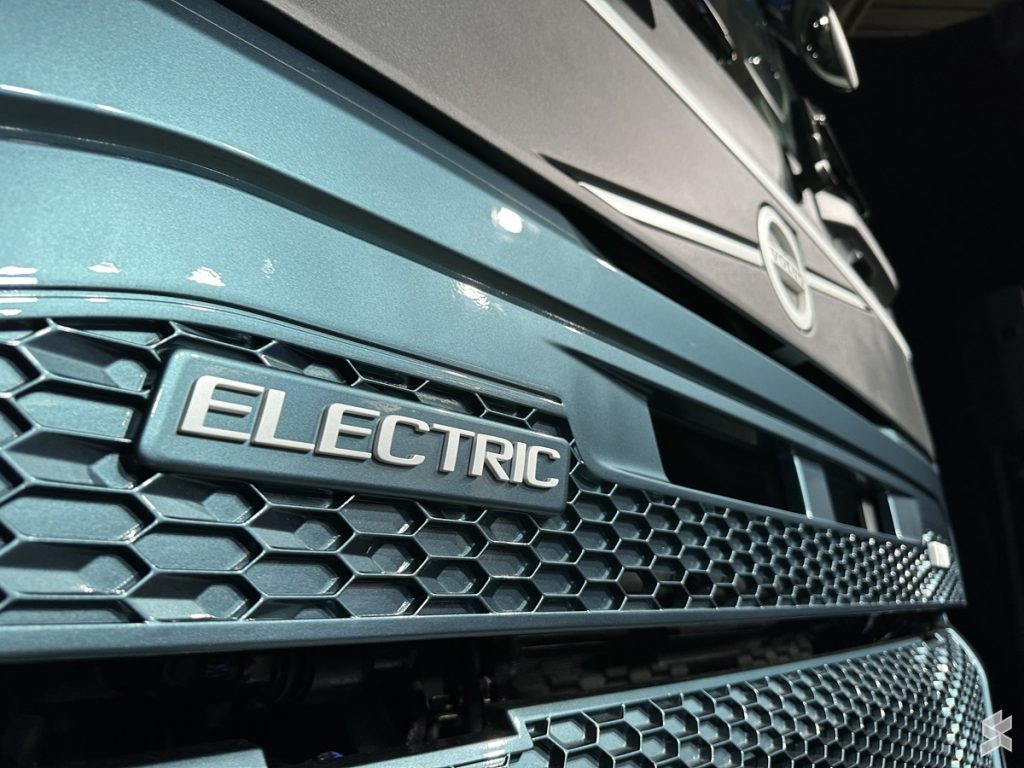
Just like passenger EVs, electric trucks do not emit any exhaust gas which significantly helps the global effort to reduce greenhouse gases and they are doing it on a larger scale too. This is because the emission from one heavy duty truck is equivalent to around 47 passenger vehicles according to Volvo.
Having zero emissions became even more critical when you consider some of the routines within the transportation industry. Anthony O’Connell, the Managing Director of Volvo Trucks Malaysia pointed out that trucks would keep their aircon turned on while idling which doesn’t come as a surprise given the weather in Malaysia.
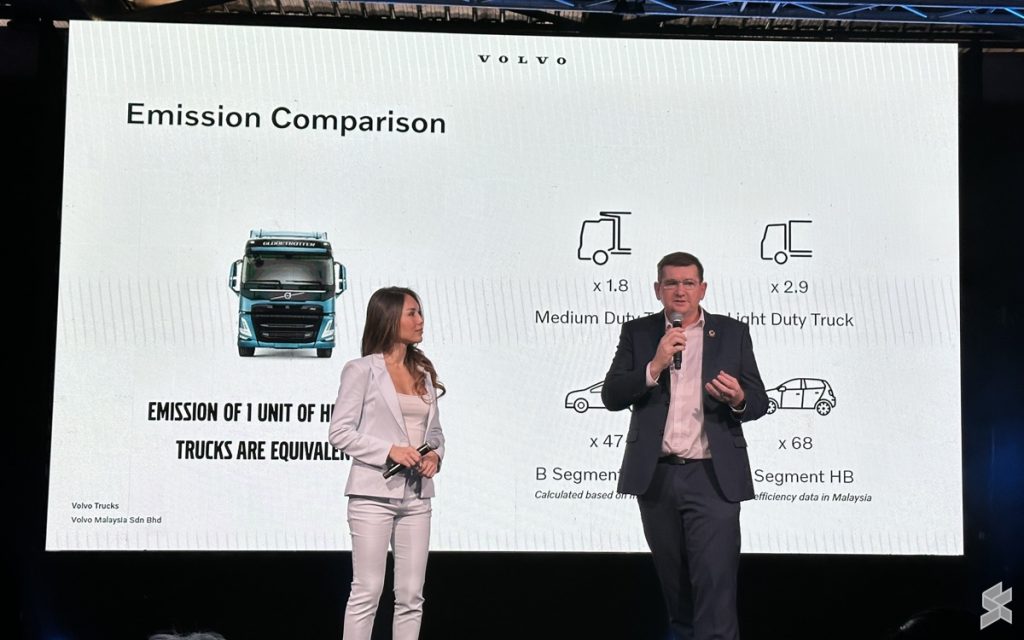
Unlike electric trucks that sip power from battery packs, a traditional truck will continue to burn diesel and release harmful gases while idling. Using a Volvo FH truck as an example, the company also said that the electric version has the potential to use up to 50% less energy than its diesel-based counterpart under similar driving conditions.
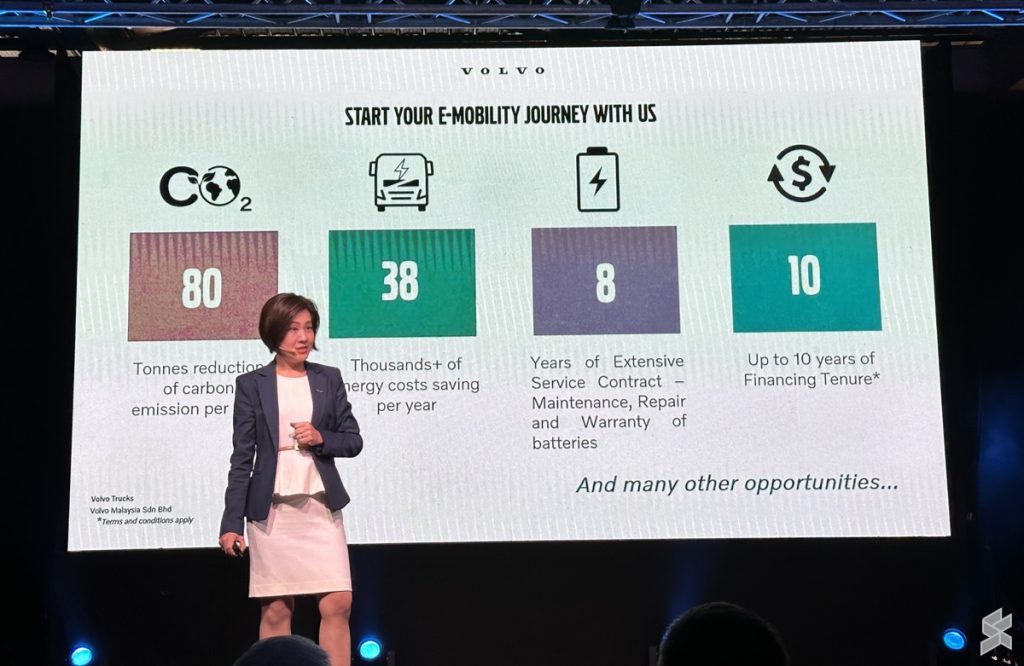
In terms of finances, transportation companies might be able to save at least RM35,000 in terms of annual energy costs according to Amanda. There are also further savings through the government’s green vehicles initiatives such as MyHijau’s Green Investment Tax Allowance as well as exemption on import duty, sales tax, and road tax.
The cost of ownership
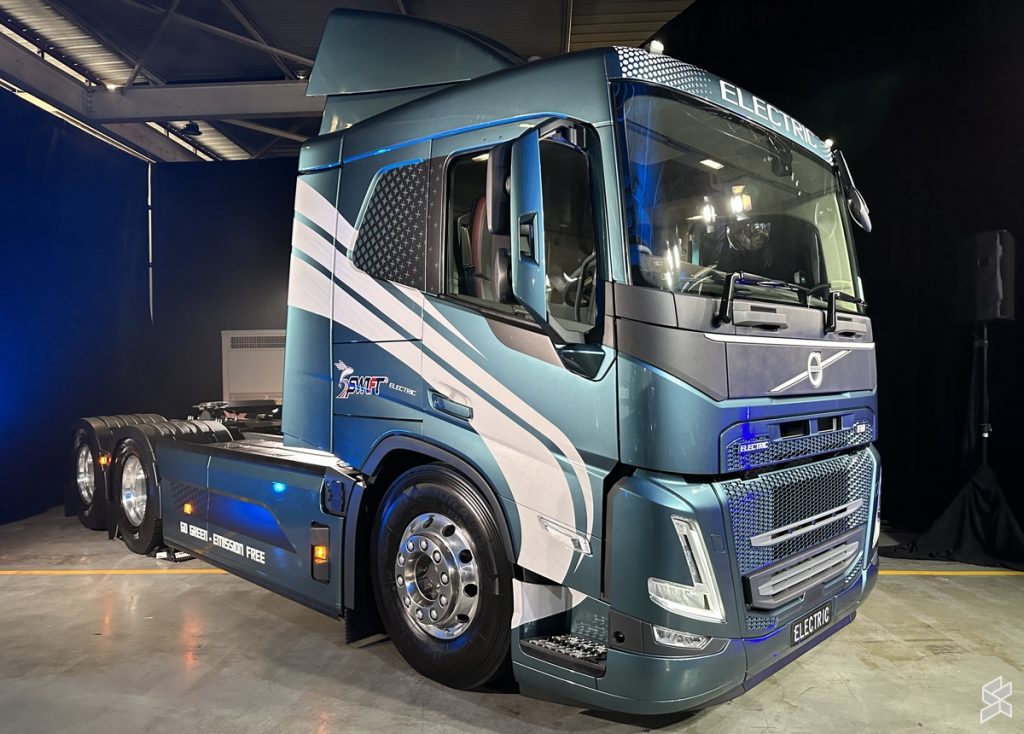
As mentioned earlier, the Volvo heavy duty EV trucks are available in three different variants although all of them have a maximum Gross Combination Weight rating of 44 tonnes. For one, the Volvo FH Electric is meant for city-to-city transportation while the FMX Electric was designed to carry heavyweight materials and machines.
Meanwhile, FM Electric focuses on versatility which allows it to be used for a variety of workloads including high-capacity grocery deliveries, container transportation, and crane services. Just like how they all share the same battery setup, these trucks can be fitted with up to three electric motors that deliver up to 490kW (666hp) of output and 2400Nm of torque.
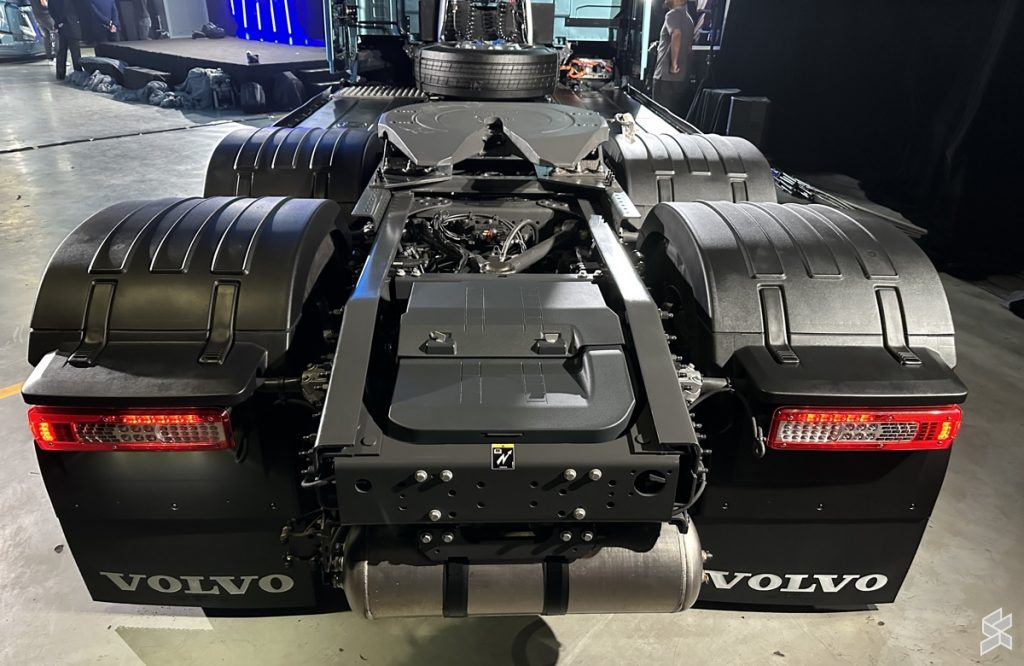
Since they are made according to customers’ requirements, usages, and other related factors, there is no exact figure when it comes to the starting price of these Volvo electric trucks. Nevertheless, it generally costs upwards of RM1.2 million to have them as part of one’s fleet.
Safety is still a priority for Volvo EV trucks
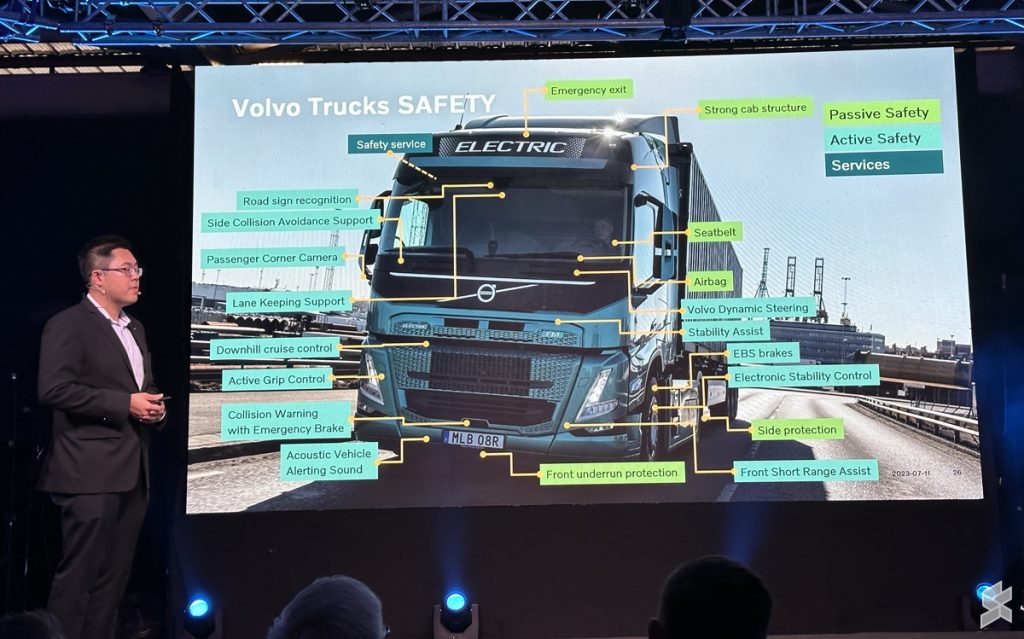
Volvo’s name has always been synonymous with safety and things are no different for its electric trucks. Hence, the list of safety features that customers can choose to fit into their trucks is rather impressive.
Alongside common features such as airbags and Electronic Brake System (EBS), among those on the list are the Volvo Dynamic Steering, Downhill Cruise Control, Stability Assist, and Electronic Stability Control. Customers can even have advanced features such as Lane Keeping Support, Road Sign Recognition, and radar-based Side Collision Avoidance Support.
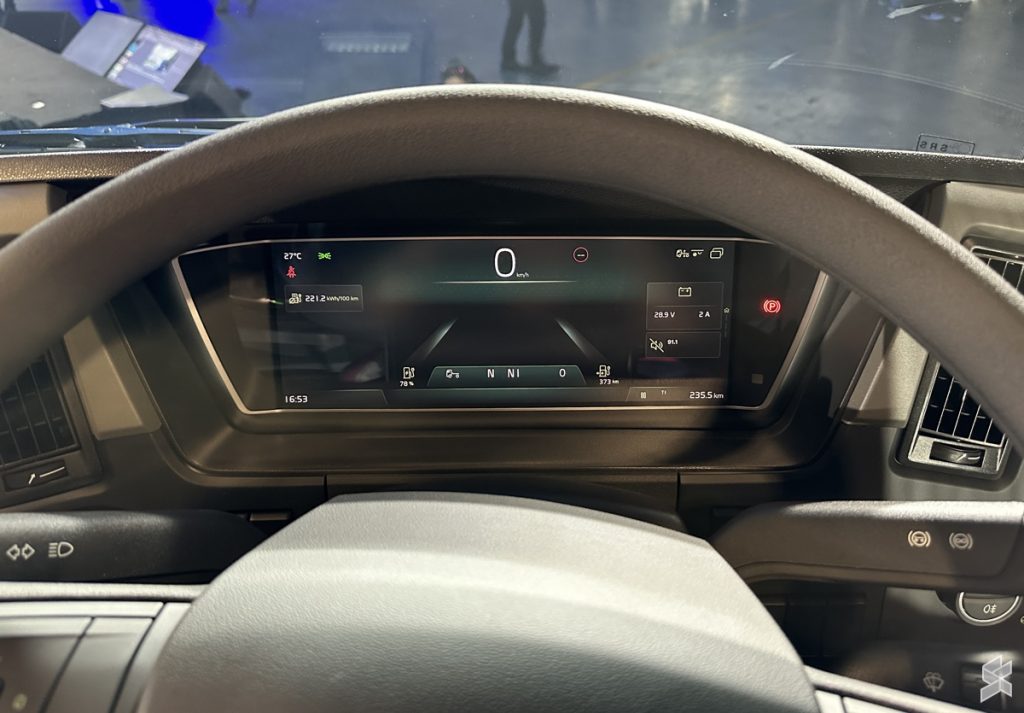
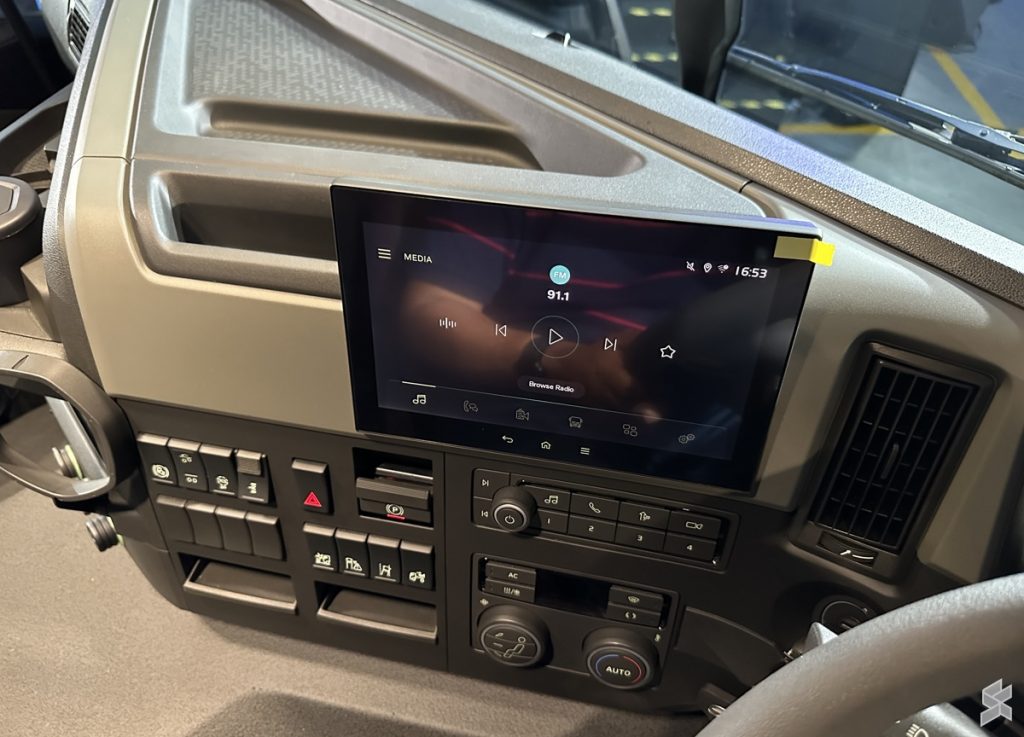

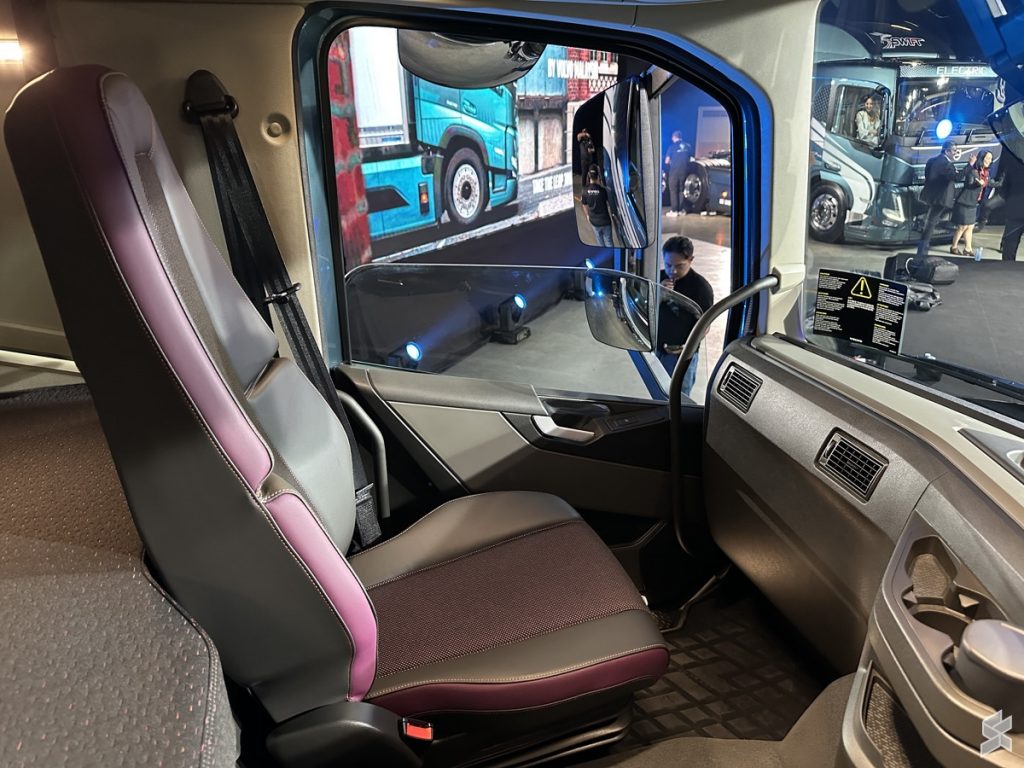
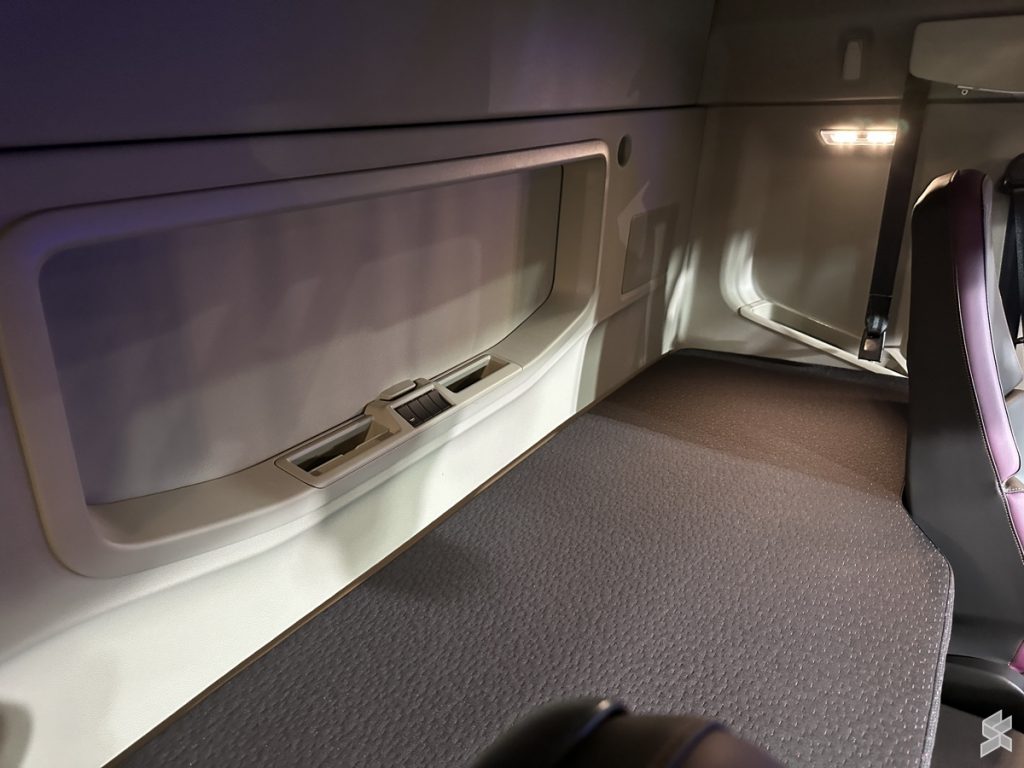
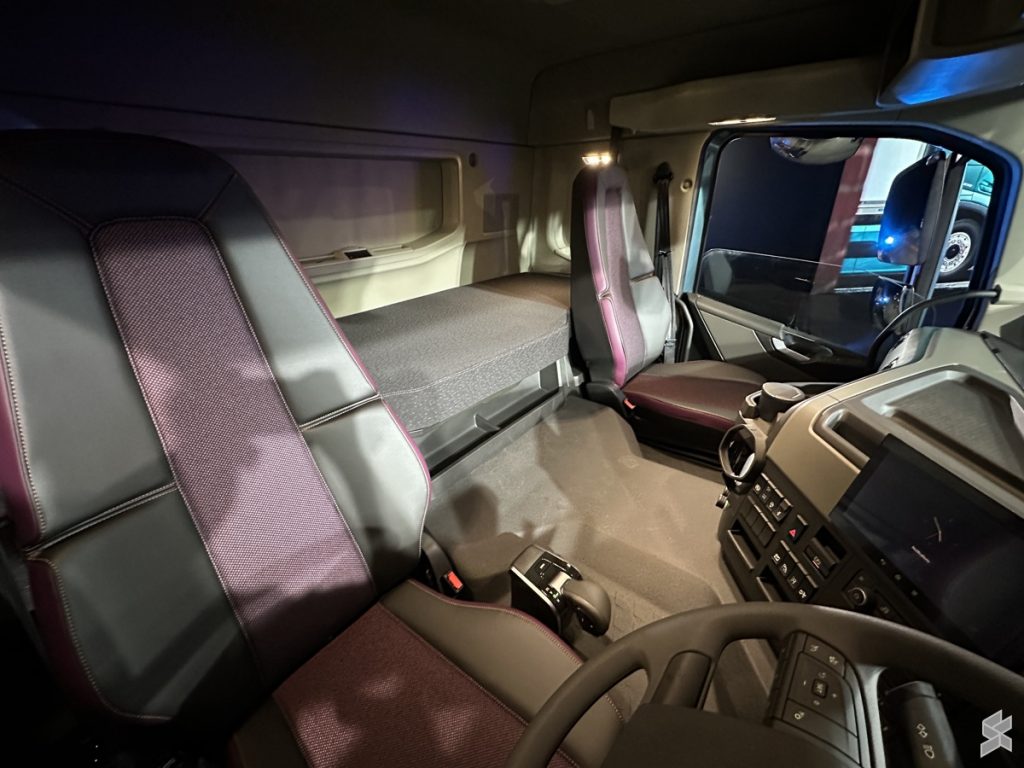
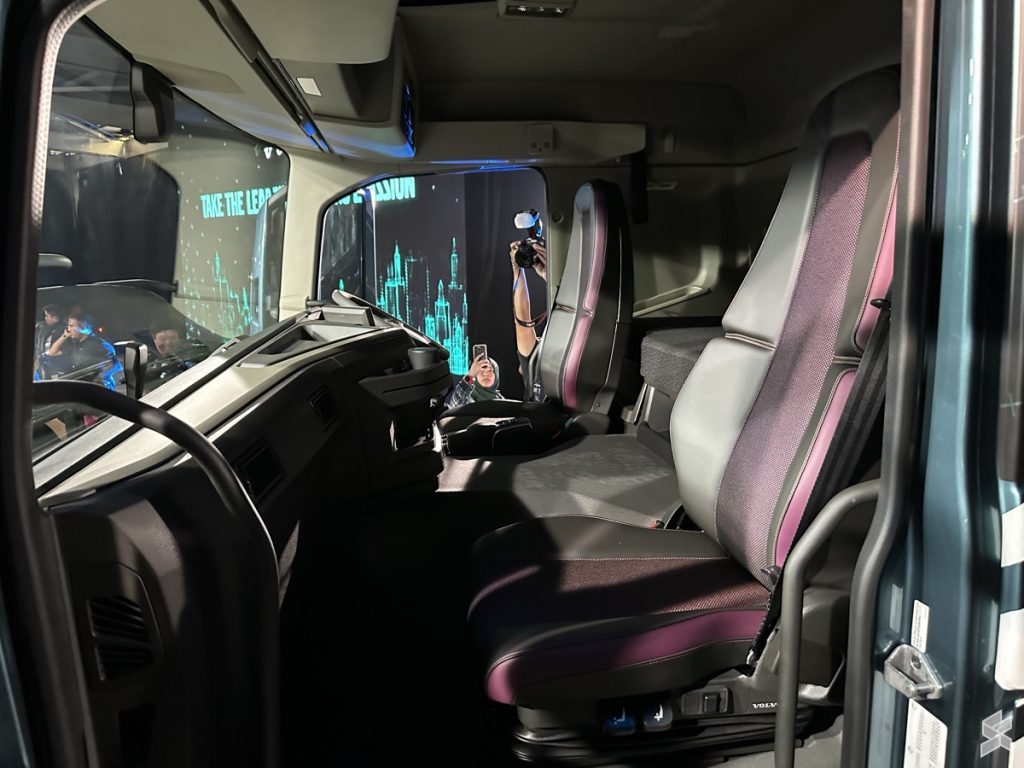
Volvo has also fitted a 12-inch digital instrument cluster into its EV trucks for drivers to easily get the driving information that they need. There is also another 9-inch side touch display for the vehicle information system which drivers can also choose to safely interact with the display using the buttons on the steering wheel.
EVs are famously known for being quiet and it is apparently the same for Volvo electric trucks. That is why artificial sounds have been added to the EV trucks to help alert pedestrians and other road users of their presence, in the name of safety.

